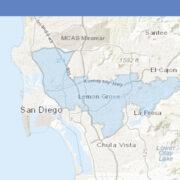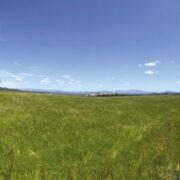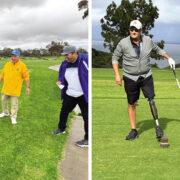One may acquire U.S. citizenship either at birth or through naturalization. Birth in the U.S. is the common way of acquiring citizenship. Under INA 101(a)(38), the incorporated territories of Puerto Rico, the U.S. Virgin Islands, Guam, and the Northern Mariana Islands are part of the U.S. for purposes of nationality laws. Birth in these incorporated territories is considered birth in the U.S. However, U.S. territory also includes outlying possessions, which are areas where the Constitution has not been fully extended. Unlike in incorporated territories, birth in an outlying possession does not make a child a U.S. citizen (USC) but such child is a non-citizen U.S. national. Like USCs, non-citizen U.S. nationals owe allegiance to the U.S. and are entitled to consular protection when abroad but non-citizen U.S. nationals cannot vote in federal or state elections. Under INA 101(a)(29), American Samoa and Swains Island are the only remaining outlying possessions.
Birth in an outlying possession, under certain conditions, is another way of acquiring citizenship. Under INA 301(e), a child born in an outlying possession to one USC parent and a non-USC parent is a USC if, prior to the child’s birth, the USC parent has been physically present in the U.S. or an outlying possession for a continuous period of one year.
Birth abroad or outside U.S. territory, subject to various requirements, is the third way of acquiring citizenship at birth. A person born abroad is a USC when a USC parent transmits citizenship to such child. The general requirements for transmitting U.S. citizenship are: (1) at least one natural parent must have been a USC when the child was born; and (2) the USC parent must have either resided or have been physically present in the U.S. for the amount of time required by the law that was in effect when the child was born.
It must be emphasized that the laws governing the transmission or acquisition of U.S. citizenship by birth abroad has been significantly amended several times. Thus, in determining whether a child born abroad to a USC parent is a USC, we must first determine the applicable law, which is law in effect when the child was born.
Under current laws, the following are the basic rules for transmitting U.S. citizenship to children born abroad.
First, under INA 301(c), a child born abroad to two USC parents is a USC by birth if one parent has resided in the U.S. or its outlying possession prior to the child’s birth. Under a previous law in effect before January 13, 1941, the USC parent must have resided only in the U.S., not in an outlying possession.
Second, under INA 301(d), a child born abroad to one USC parent and one non-citizen U.S. national is a USC by birth if the USC parent has been physically present in the U.S. or its outlying possession for a continuous period of one year prior to the child’s birth.
If you’ve noticed, INA 301(c) requires a parent’s residence in the U.S. while INA 301(d) requires physical presence. There’s a big difference. Under INA 101(a)(33), residence refers to a person’s principal and actual dwelling place. Residence requires more than a temporary presence and involves a connection to a specific place. Physical presence refers to any time spent in the U.S. even if it’s temporary.
Third, under INA 301(g), a child born abroad to one USC parent and one alien parent is a USC by birth if the USC parent has been physically present in the U.S. or its outlying possession for a continuous period of 5 years prior to the child’s birth. Out of these 5 years, the USC parent must show physical presence of 2 years after the age of 14. These parents must have been married prior to the child’s birth.
Fourth, under INA 309(c), a child born abroad to a USC mother and an alien father out of wedlock is a USC by birth if the USC mother has been physically present in the U.S. or its outlying possession for a continuous period of one year prior to the child’s birth.
Fifth, under INA 309(a), a child born abroad to a USC father and an alien mother out of wedlock is a USC by birth if: (1) the USC father has been physically present in the U.S. or its outlying possession for a continuous period of 5 years prior to the child’s birth, 2 years of which was after the age of 14; and (2) the blood relationship has been established, the father agrees to support the child until he’s 18, and child was legitimated or acknowledged while under 18.
We have so far surveyed only the current laws. However, in analyzing a possible acquisition of citizenship by birth abroad, it might be necessary to refer to the old laws. Next time, we’ll examine some actual cases involving these old laws in order to illustrate how citizenship acquisition rules work.




